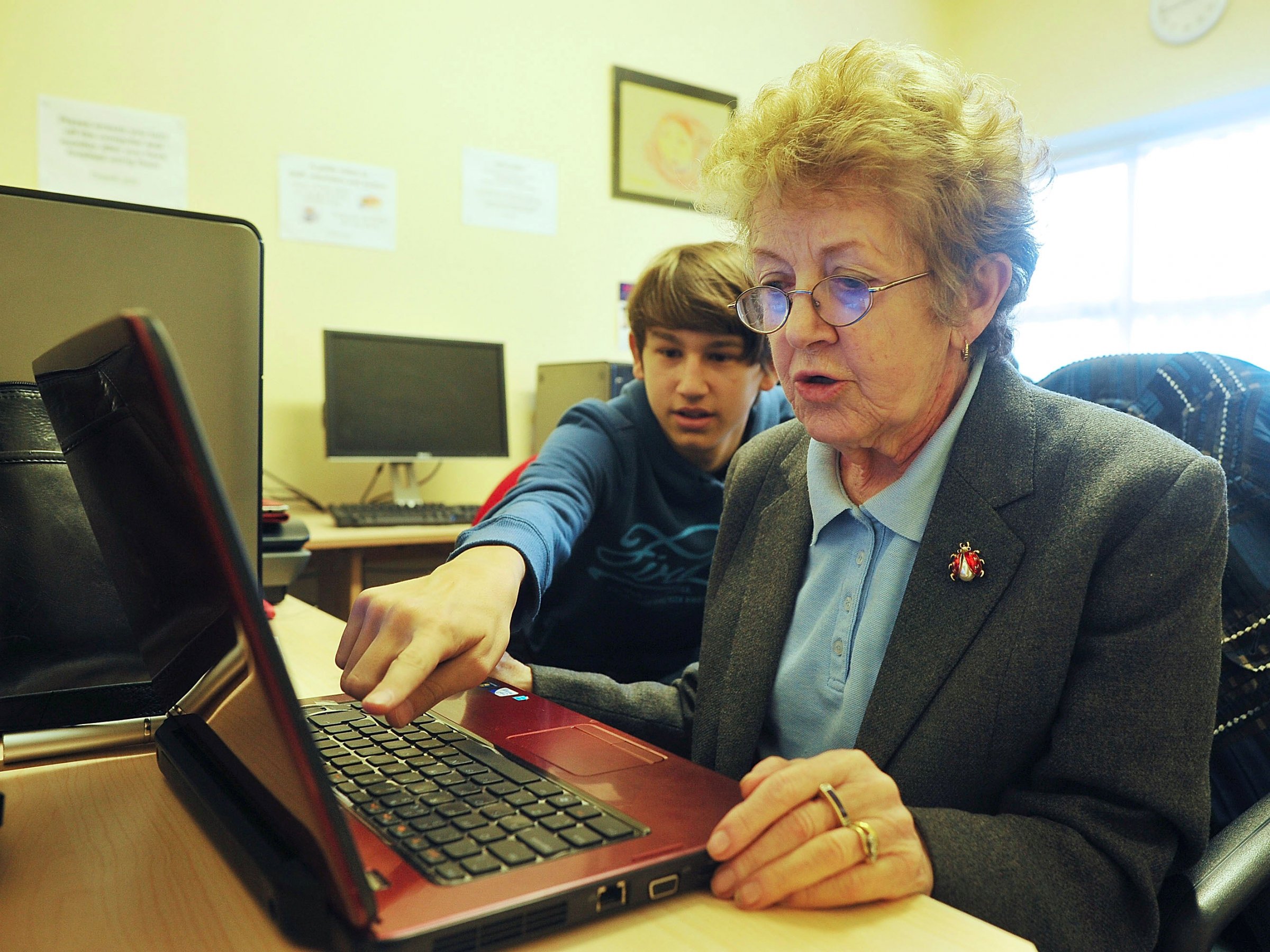 A teenager helps an elderly woman use a computerGetty
A teenager helps an elderly woman use a computerGetty
More must be done to encourage people over the age of 55, and women in particular, to keep working longer in order to boost the economy.
That is according to PwC’s latest “Golden Age Index” report, published on Tuesday, which ranked countries that were best at “harnessing the economic power of older workers.”
The UK ranks 19th out of 34 OECD countries in PwC’s analysis, a drop of one place since last year and below the overall average.
The UK’s employment rate for 50 to 64-year-olds is currently 70%, with England faring best at 70.6% and Northern Ireland worst at 63.6%. Regional differences are attributed to economic performance, educational attainment and gender divides.
The gender pay gap has also been shown to grow dramatically as age increases, a significant barrier to older women staying in work.
“As the number of people over 55 continues to grow steadily and life expectancy increases, the UK needs to make it as easy as possible for people to continue working for longer if they wish to do so. This would boost both GDP and tax revenues, so helping to pay for the increased health, social care and pension costs of an ageing population,” said John Hawksworth, PwC’s chief economist.
The average age in the UK exceeded 40 for the first time ever in 2014, and it is predicted that nearly one in seven will be over 75 by 2040. Andy Briggs, the government’s business champion for older workers, called in February this year for the number of workers aged between 50-70 to increase by one million over the next five years.
The International Monetary Fund has also estimated there will be a significant drop in productivity growth in the Euro Area in the medium- to long-term, as the number of retired citizens grows and the average age of workers increases.
Analysts predict that the UK could increase its GDP by roughly 4.2% (about £80 billion by current values) if the employment rate of older workers increased 12 percentage points to match Sweden’s, which sits in fourth place.
The gender gap
Significantly more men (75.4%) aged between 50-64 are employed, compared with women (64.9%). According to PwC, older women disproportionately suffer bars to sustainable employment such as lower pay and more part-time work.
Indeed, the gender pay gap increases from an average of £28 per week for 22-29 year olds to £153 for 50-59 year olds. Meanwhile, regions with more highly educated workers tend to have higher older-worker employment rates.
“For employers, flexible working and partial retirement options can pay dividends, as can redesign of the workplace to meet the needs of older workers,” said Carol Stubbings, global people and organisation leader at PwC.
“Flexible working policies can incentivise women to remain in work longer, so having the right policies in place will increase the employment rate of those over 55 and may help to reduce the gender pay gap which is shown to increase with age,” she said.
Hawksworth agrees that the government should offer more support for older people to ensure more stay in employment, such as reforming the pension systems, financially incentivising later retirement and providing training for older workers, particularly in technology.
Iceland has consistently topped PwC’s Golden Age Index since 2003, with New Zealand ranking in second place and Israel in third in the latest report. Turkey comes last, having slipped 12 places since 2003. If all OECD countries currently below rose to match Sweden’s level, gains to GDP could be as large as $2 trillion overall, according to the analysis, and could rise as high as 16% of GDP for Greece and 13% for Belgium.
 Employment rate of 50-64 year oldsPwC analysis
Employment rate of 50-64 year oldsPwC analysis













